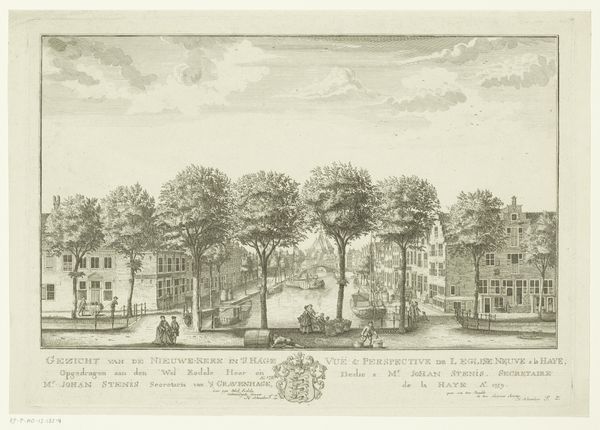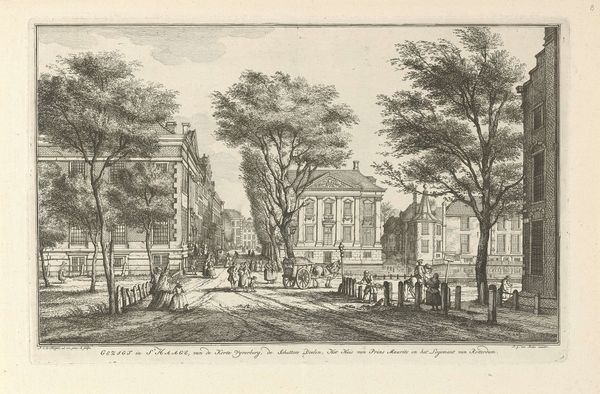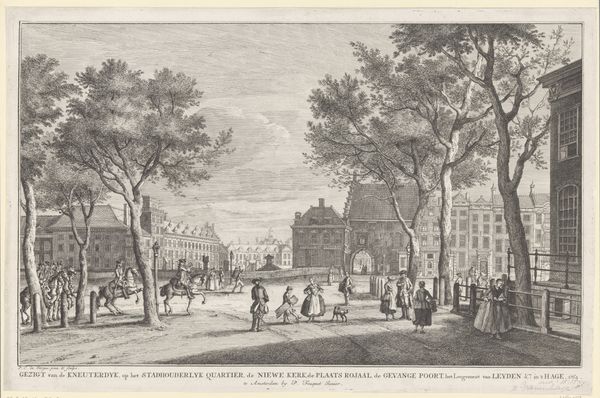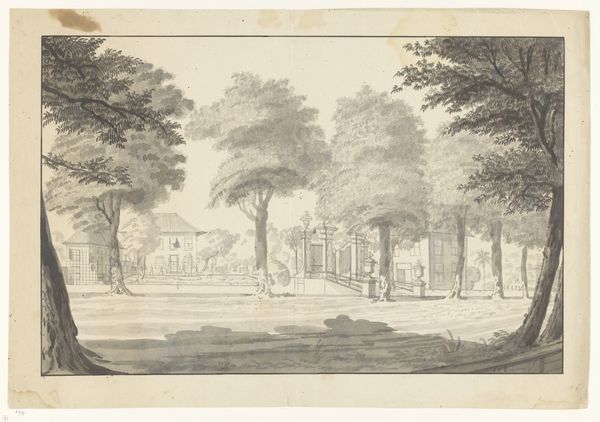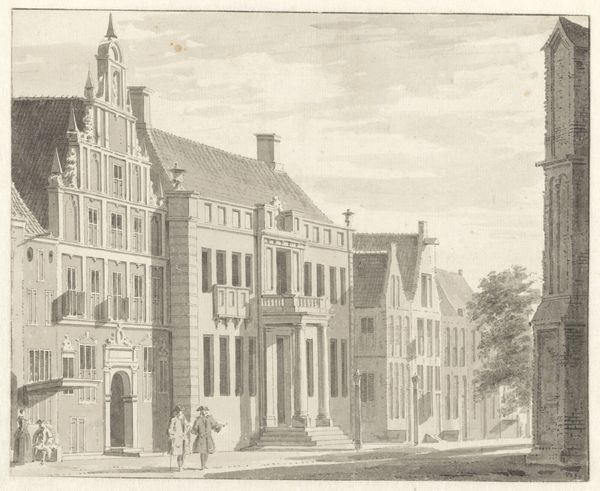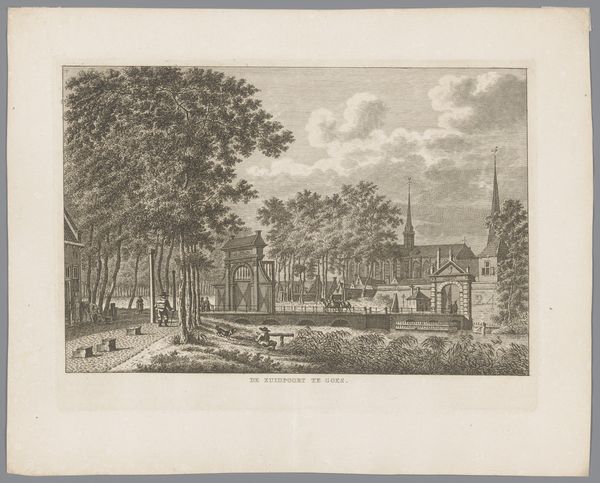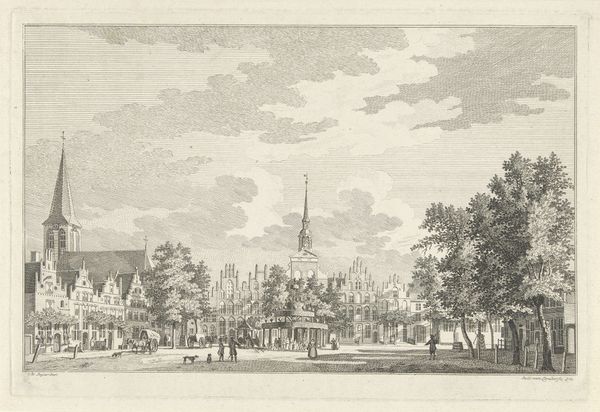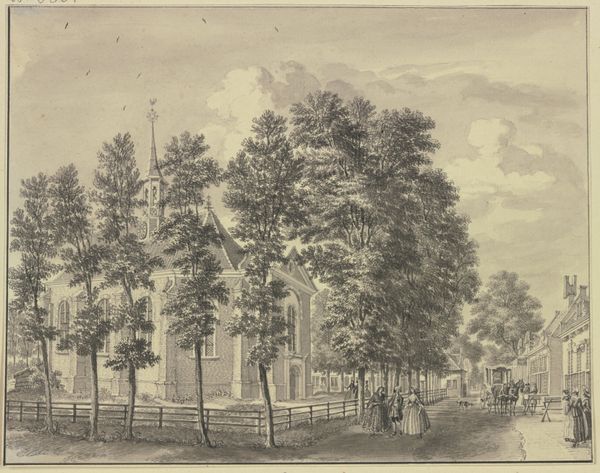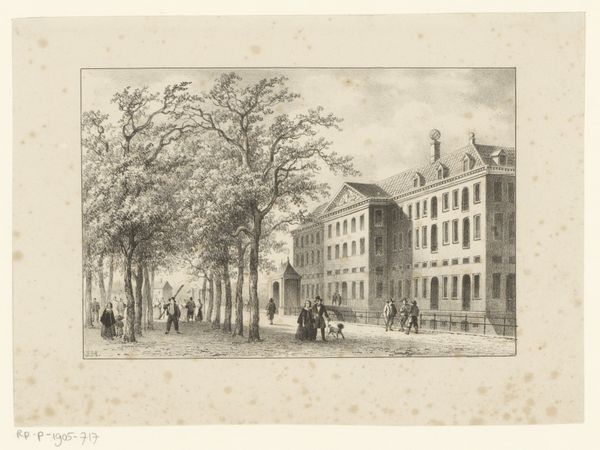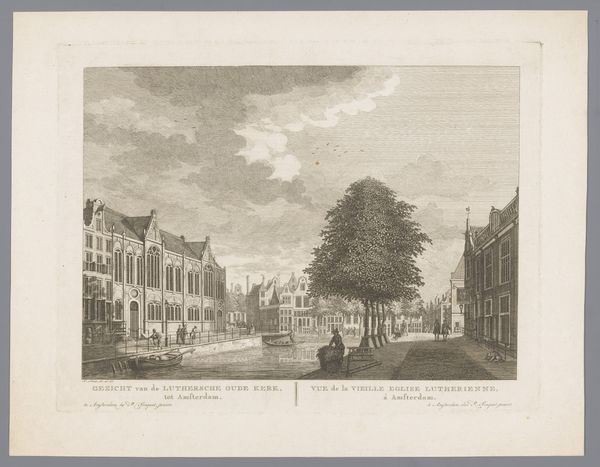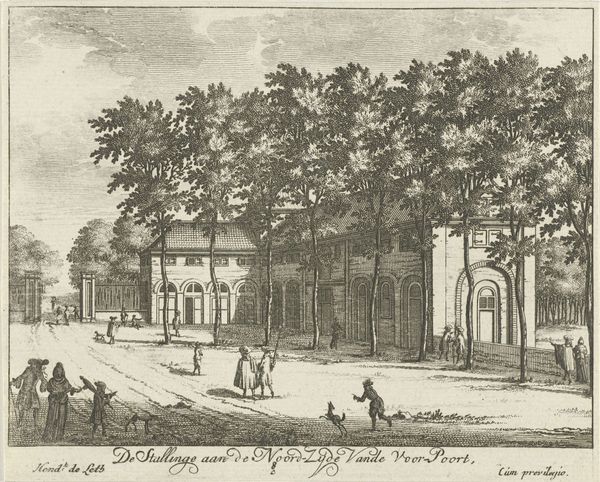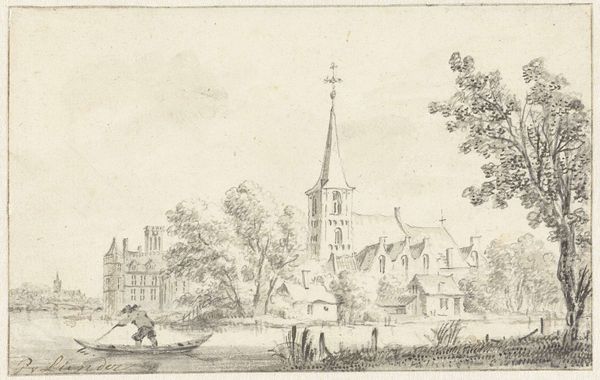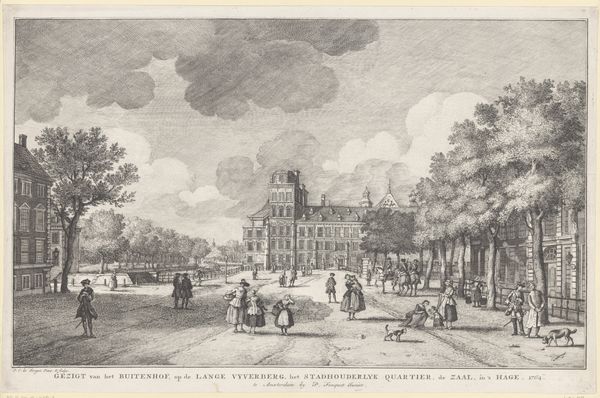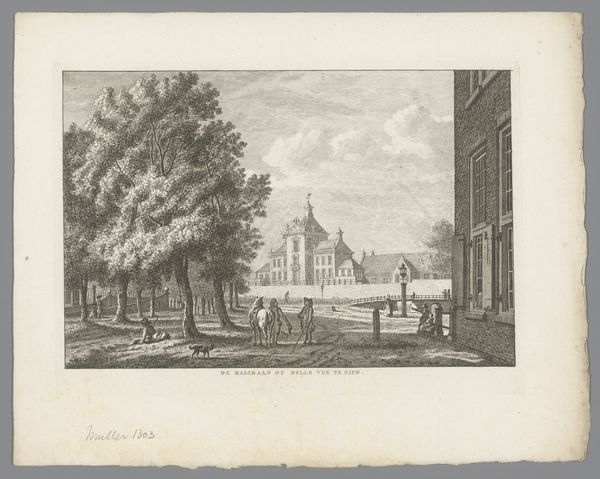
drawing, ink, pen
#
drawing
#
neoclacissism
#
landscape
#
ink
#
pen
#
cityscape
Copyright: Public Domain
Curator: Looking at this artwork, what's your first impression? Editor: It's a bit somber, almost like looking at an old photograph. There's a quiet, reserved quality, despite the marketplace setting. I can imagine that The Hague has changed quite a lot since this drawing. Curator: Indeed. What you're observing is Paulus Constantijn la Fargue’s pen and ink drawing, "The Large Marketplace in The Hague," created sometime after 1760. Currently, it resides here in the Städel Museum collection. The artist's perspective, coupled with the pen and ink medium, lends that almost ghostly ambience that you're picking up on. Editor: It really captures a specific moment in time, a snapshot of urban life nearly two and a half centuries ago. Tell me more about what this marketplace meant to The Hague at the time. Curator: The marketplace, then as now, served as the heart of social and economic activity. The architecture, visible in the background, and the layout of the space convey a sense of order and civic pride emblematic of Neoclassical sensibilities. The spire punctuates the image and gives a visual weight to this civic area. But observe the details of the figures--how they seem both present and somewhat detached within the overall scene. There are subtle dramas contained within it all. Editor: It’s interesting how the figures are placed almost uniformly within the pictorial plane, echoing an earlier approach to painting. Are the trees symbolic, too? They frame the architecture in a way that's hard to ignore. Curator: Trees often represented stability and growth in civic contexts, particularly during the rise of Neoclassicism. I see them as mediating elements, harmonizing the architectural aspirations with nature's organic forms. This arrangement mirrors the period's broader attempts to impose order and structure onto the natural world, reflecting emerging political sensibilities and the ideals of the enlightenment. Editor: Knowing that, it changes my understanding completely. I now view the image less as a simple scene of marketplace life and more as a carefully arranged allegory of societal ideals at the time. Curator: Exactly. La Fargue captures more than just a visual record; he provides a glimpse into the collective psyche of a society navigating profound shifts. That single-point perspective, along with the precise renderings of architectural forms and people's placements, speak volumes. Editor: It certainly highlights how deeply connected the visual arts are with socio-political context. Curator: I find it so intriguing how artworks carry cultural memories within their very composition, connecting us to different eras and their unspoken ideologies. Editor: Absolutely, I'll definitely be lingering with this work much longer to unpack its layers.
Comments
No comments
Be the first to comment and join the conversation on the ultimate creative platform.
